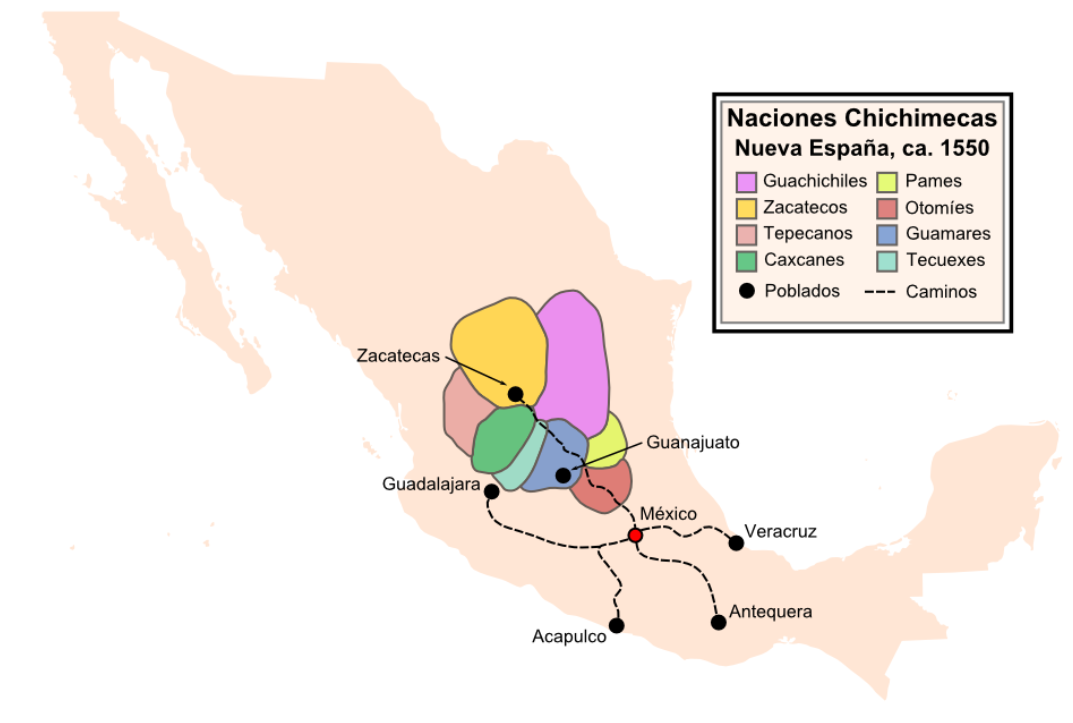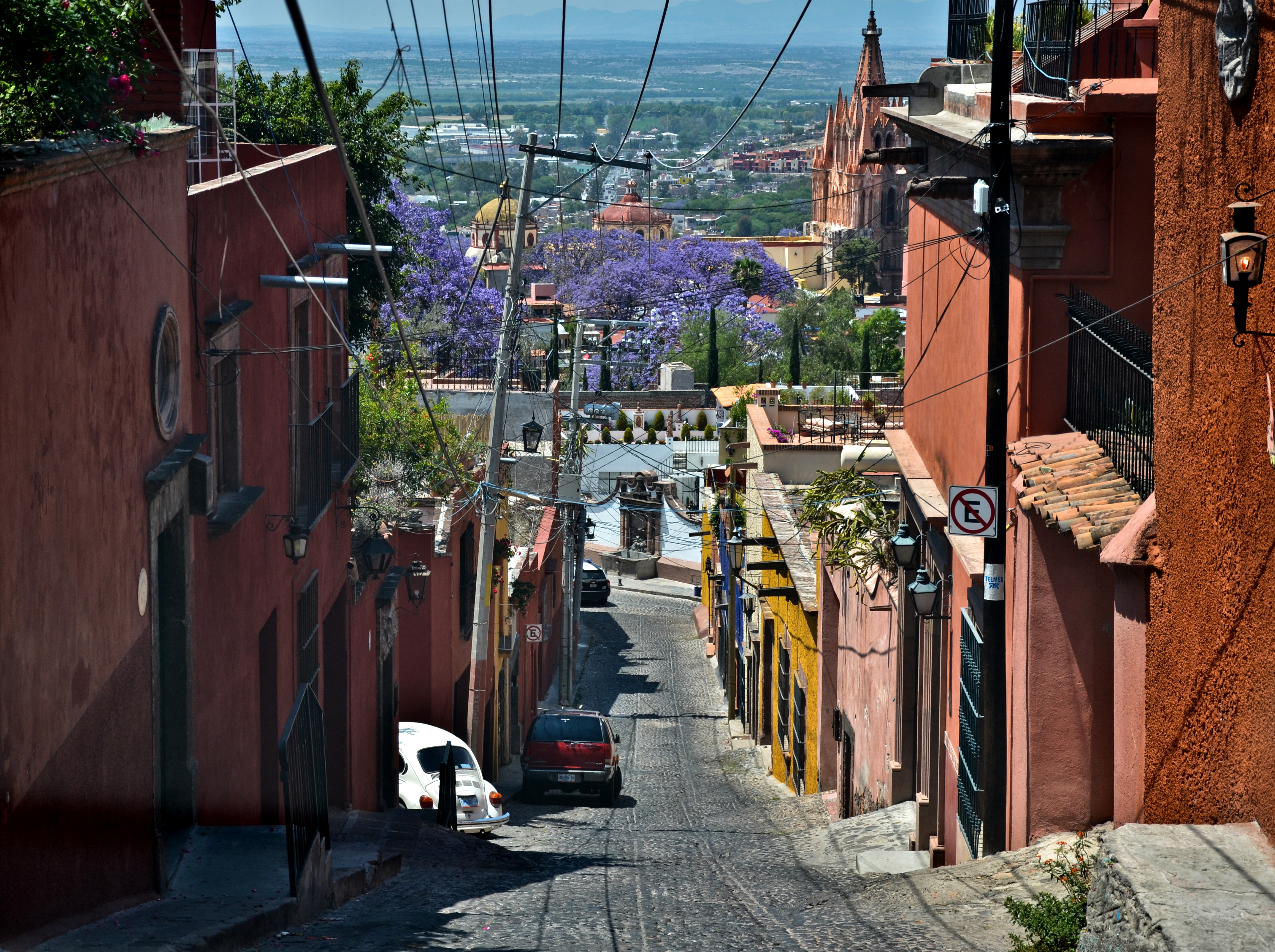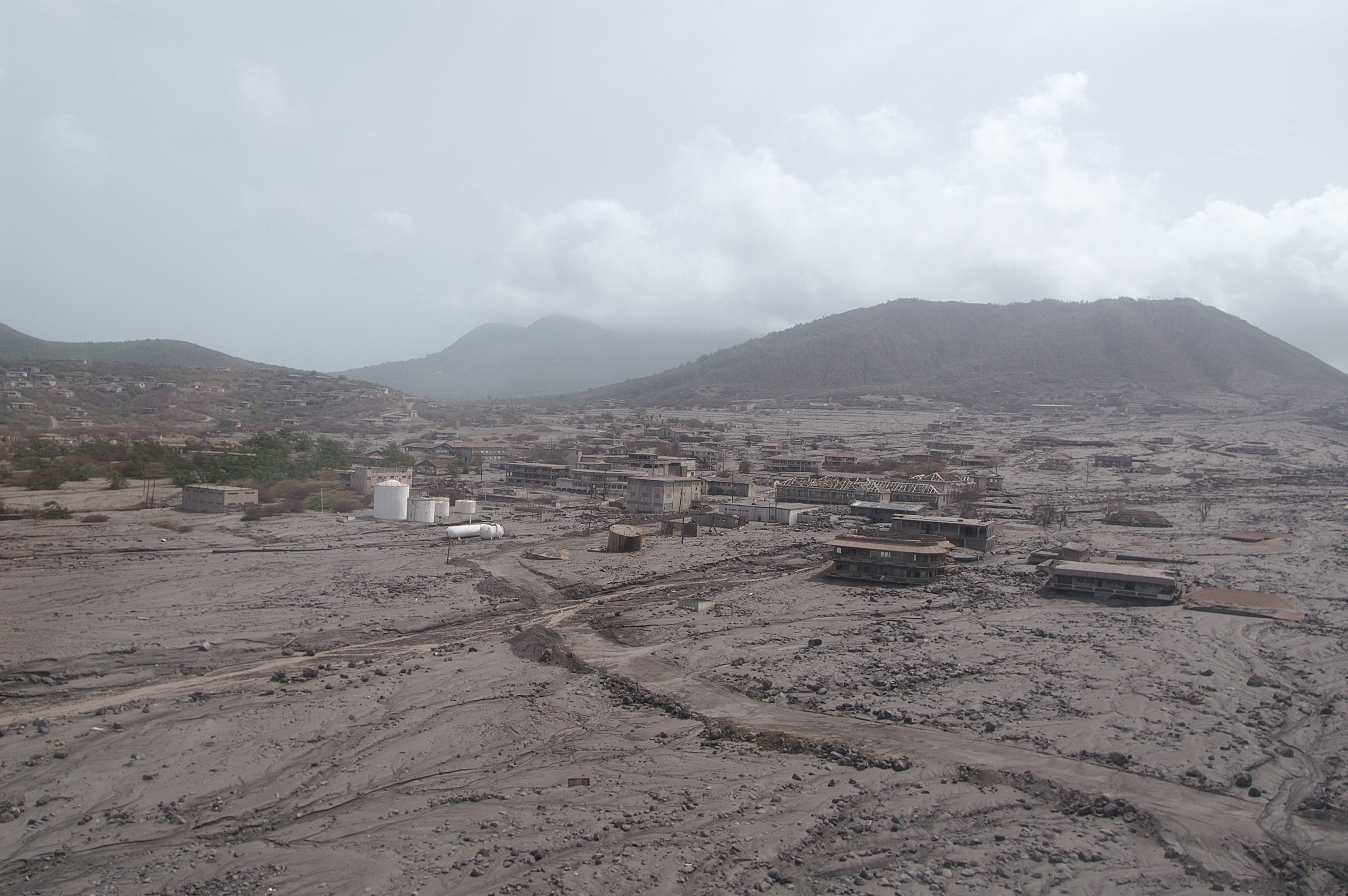|
San Miguel De Allende
San Miguel de Allende () is the principal city in the Municipalities of Mexico, municipality of San Miguel de Allende (municipality), San Miguel de Allende, located in the far eastern part of Guanajuato, Mexico. A part of the Bajío region, the town lies from Mexico City, 86 km (53 mi) from Querétaro City, Querétaro and from the state capital of Guanajuato City, Guanajuato. The town's name derives from a 16th-century friar, Juan de San Miguel, and a martyr of Mexican Independence, Ignacio Allende, who was born in a house facing the central plaza. San Miguel de Allende was a critical epicenter during the historic Chichimeca War (1540–1590) when the Chichimeca held back the Spanish Empire during the initial phases of Spanish colonization of the Americas, European colonization. Today, an old section of the town is part of a proclaimed World Heritage Site, attracting thousands of tourists and new residents from abroad every year. At the beginning of the 20th century, t ... [...More Info...] [...Related Items...] OR: [Wikipedia] [Google] [Baidu] |
States Of Mexico
A Mexican State (), officially the Free and Sovereign State (), is a constituent Federated state, federative Polity, entity of Mexico according to the Constitution of Mexico. Currently there are 31 states, each with its own constitution, State governments of Mexico, government, Lists of Mexican state governors, state governor, and List of Mexican state congresses, state congress. In the hierarchy of Administrative divisions of Mexico, Mexican administrative divisions, states are further divided into municipalities of Mexico, municipalities. Currently there are 2,462 municipalities in Mexico. Although not formally a state, political reforms have enabled Mexico City (), the capital city of the Mexico, United Mexican States to have a federative entity status equivalent to that of the states since January 29, 2016. Current Mexican governmental publications usually lists 32 federative entities (31 states and Mexico City), and 2,478 municipalities (including the 16 boroughs of Mexico ... [...More Info...] [...Related Items...] OR: [Wikipedia] [Google] [Baidu] |
Chichimeca War
The Chichimeca War (1550–1600) was a military conflict between the Spanish Empire and the Chichimeca Confederation established in the territories today known as the Central Mexican Plateau, called by the Conquistadores La Gran Chichimeca. The epicenter of the hostilities was the region now called the Bajío. The Chichimeca War is recorded as the longest and most expensive military campaign confronting the Spanish Empire and indigenous people in Aridoamerica. The forty-year conflict was settled through several peace treaties driven by the Spaniards which led to the pacification and, ultimately, the streamlined integration of the native populations into the New Spain society. The Chichimeca War (1550–1600) began eight years after the two-year Mixtón War. It can be considered a continuation of the rebellion as the fighting did not come to a halt in the intervening years. The war was fought in what are the present-day Mexican states of Zacatecas, Guanajuato, Aguascaliente ... [...More Info...] [...Related Items...] OR: [Wikipedia] [Google] [Baidu] |
Miguel Palanca
Miguel Palanca Fernández (born 18 December 1987) is a Spanish former professional footballer. Mainly a right winger, he also operated as a forward. Club career Born in Tarragona, Catalonia, Palanca was a product of RCD Espanyol's youth academy, playing once for the first team in 2006–07 then spending the following season solely with the reserves. His La Liga debut arrived on 29 April 2007, as he came on as a substitute for Albert Riera during the second half of a 3–1 away loss against Sevilla FC. Subsequently, Palanca was sold to Real Madrid. On 13 December 2008 he made his debut for the main squad, replacing Wesley Sneijder in the first half of a 2–0 away defeat to FC Barcelona. Again from the bench, he helped his team beat Valencia CF one week later at the Santiago Bernabéu Stadium (1–0). Palanca was loaned to CD Castellón of the Segunda División for 2009–10. The following campaign, after the club's relegation, he signed a two-year contract with another s ... [...More Info...] [...Related Items...] OR: [Wikipedia] [Google] [Baidu] |
Chichimeca
Chichimeca () is the name that the Nahua peoples of Mexico generically applied to nomadic and semi-nomadic peoples who were established in present-day Bajío region of Mexico. Chichimeca carried the same meaning as the Roman term "barbarian" that described Germanic tribes. The name, with its pejorative sense, was adopted by the Spanish Empire. In the words of scholar Charlotte M. Gradie, "for the Spanish, the Chichimecas were a wild, nomadic people who lived north of the Valley of Mexico. They had no fixed dwelling places, lived by hunting, wore little clothes and fiercely resisted foreign intrusion into their territory, which happened to contain silver mines the Spanish wished to exploit."Gradie, Charlotte M. "Discovering the Chichimecas" ''Academy of American Franciscan History'', Vol 51, No. 1 (July 1994), p. 68 Gradie noted that Chichimeca was used as a broad and generalizing term by outsiders, writing, " twas used by both Spanish and Nahuatl speakers to refer collectively to ... [...More Info...] [...Related Items...] OR: [Wikipedia] [Google] [Baidu] |
United Nations Educational, Scientific And Cultural Organization
The United Nations Educational, Scientific and Cultural Organization (UNESCO ) is a List of specialized agencies of the United Nations, specialized agency of the United Nations (UN) with the aim of promoting world peace and International security, security through international cooperation in education, arts, sciences and culture. It has 194 Member states of UNESCO, member states and 12 associate members, as well as partners in the Non-governmental organization, non-governmental, Intergovernmental organization, intergovernmental and private sector. Headquartered in Paris, France, UNESCO has 53 regional field offices and 199 National Commissions for UNESCO, national commissions. UNESCO was founded in 1945 as the successor to the League of Nations' International Committee on Intellectual Cooperation.English summary). UNESCO's founding mission, which was shaped by the events of World War II, is to advance peace, sustainable development and human rights by facilitating collaboratio ... [...More Info...] [...Related Items...] OR: [Wikipedia] [Google] [Baidu] |
World War II
World War II or the Second World War (1 September 1939 – 2 September 1945) was a World war, global conflict between two coalitions: the Allies of World War II, Allies and the Axis powers. World War II by country, Nearly all of the world's countries participated, with many nations mobilising all resources in pursuit of total war. Tanks in World War II, Tanks and Air warfare of World War II, aircraft played major roles, enabling the strategic bombing of cities and delivery of the Atomic bombings of Hiroshima and Nagasaki, first and only nuclear weapons ever used in war. World War II is the List of wars by death toll, deadliest conflict in history, causing World War II casualties, the death of 70 to 85 million people, more than half of whom were civilians. Millions died in genocides, including the Holocaust, and by massacres, starvation, and disease. After the Allied victory, Allied-occupied Germany, Germany, Allied-occupied Austria, Austria, Occupation of Japan, Japan, a ... [...More Info...] [...Related Items...] OR: [Wikipedia] [Google] [Baidu] |
David Alfaro Siqueiros
David Alfaro Siqueiros (born José de Jesús Alfaro Siqueiros; December 29, 1896 – January 6, 1974) was a Mexican social realist painter, best known for his large public murals using the latest in equipment, materials and technique. Along with Diego Rivera and José Clemente Orozco, he was one of the most famous of the "Mexican muralists". Siqueiros was a member of the Mexican Communist Party. Although he went to Spain to support the Second Spanish Republic, Spanish Republic against the forces of Francisco Franco with his art, he volunteered and served in frontline combat as a Lieutenant Colonel in the Spanish Republican Army, Army of the Republic through 1938 before returning to Mexico City. In 1940, he led a Leon Trotsky#Assassination, failed assassination attempt on Leon Trotsky in which Trotsky's 14-year-old grandson was shot and American communist Robert Sheldon Harte was executed. After spending several months on the run from Mexican authorities disguised as a peasant, S ... [...More Info...] [...Related Items...] OR: [Wikipedia] [Google] [Baidu] |
Instituto Allende
The Instituto Allende is a visual arts school in San Miguel de Allende, Mexico. The institute provides a range of courses, and offers a BA in Visual Arts and an MA in Fine arts in association with the Universidad de Guanajuato. Its courses and degrees are recognized by most North American universities. It has been popular with American and Canadian students and artists since it opened in 1950, and the town now has a large expatriate community from the United States and Canada. Location The town of San Miguel de Allende is about four hours drive north of Mexico City. It is named after General Ignacio Allende, a hero of the Mexican War of Independence. It is at altitude of and has a temperate climate. The town was founded in 1542. It was flourishing by the 17th century, but in the late 18th century suffered from a severe economic crisis. The wealthy inhabitants moved elsewhere, and the town stagnated. The institute brought new life to the town, which is now relatively prosperous ... [...More Info...] [...Related Items...] OR: [Wikipedia] [Google] [Baidu] |
Neoclassical Architecture
Neoclassical architecture, sometimes referred to as Classical Revival architecture, is an architectural style produced by the Neoclassicism, Neoclassical movement that began in the mid-18th century in Italy, France and Germany. It became one of the most prominent architectural styles in the Western world. The prevailing styles of architecture in most of Europe for the previous two centuries, Renaissance architecture and Baroque architecture, already represented partial revivals of the Classical architecture of Roman architecture, ancient Rome and ancient Greek architecture, but the Neoclassical movement aimed to strip away the excesses of Late Baroque and return to a purer, more complete, and more authentic classical style, adapted to modern purposes. The development of archaeology and published accurate records of surviving classical buildings was crucial in the emergence of Neoclassical architecture. In many countries, there was an initial wave essentially drawing on Roman archi ... [...More Info...] [...Related Items...] OR: [Wikipedia] [Google] [Baidu] |
Baroque Architecture
Baroque architecture is a highly decorative and theatrical style which appeared in Italy in the late 16th century and gradually spread across Europe. It was originally introduced by the Catholic Church, particularly by the Jesuits, as a means to combat the Reformation and the Protestantism, Protestant church with a new architecture that inspired surprise and awe. It reached its peak in the High Baroque (1625–1675), when it was used in churches and palaces in Italy, Spain, Portugal, France, Bavaria and Austria. In the Late Baroque period (1675–1750), it reached as far as Russia, the Ottoman Baroque architecture, Ottoman Empire and the Spanish colonization of the Americas, Spanish and Portuguese colonization of the Americas, Portuguese colonies in Latin America. In about 1730, an even more elaborately decorative variant called Rococo appeared and flourished in Central Europe. Baroque architects took the basic elements of Renaissance architecture, including domes and colonnades, ... [...More Info...] [...Related Items...] OR: [Wikipedia] [Google] [Baidu] |
Influenza
Influenza, commonly known as the flu, is an infectious disease caused by influenza viruses. Symptoms range from mild to severe and often include fever, runny nose, sore throat, muscle pain, headache, coughing, and fatigue. These symptoms begin one to four (typically two) days after exposure to the virus and last for about two to eight days. Diarrhea and vomiting can occur, particularly in children. Influenza may progress to pneumonia from the virus or a subsequent bacterial infection. Other complications include acute respiratory distress syndrome, meningitis, encephalitis, and worsening of pre-existing health problems such as asthma and cardiovascular disease. There are four types of influenza virus: types A, B, C, and D. Aquatic birds are the primary source of influenza A virus (IAV), which is also widespread in various mammals, including humans and pigs. Influenza B virus (IBV) and influenza C virus (ICV) primarily infect humans, and influenza D virus (IDV) i ... [...More Info...] [...Related Items...] OR: [Wikipedia] [Google] [Baidu] |
Ghost Town
A ghost town, deserted city, extinct town, or abandoned city is an abandoned settlement, usually one that contains substantial visible remaining buildings and infrastructure such as roads. A town often becomes a ghost town because the economic activity that supported it (usually industrial or agricultural) has failed or ended for any reason (e.g. a host ore deposit exhausted by mining). The town may have also declined because of natural or human-caused disasters such as floods, prolonged Drought, droughts, extreme heat or extreme cold, government actions, uncontrolled lawlessness, war, pollution, or nuclear and radiation accidents and incidents, nuclear and radiation-related accidents and incidents. The term can sometimes refer to cities, towns, and neighborhoods that, though still populated, are significantly less so than in past years; for example, those affected by high levels of unemployment and dereliction. Some ghost towns, especially those that preserve period-specific ... [...More Info...] [...Related Items...] OR: [Wikipedia] [Google] [Baidu] |






